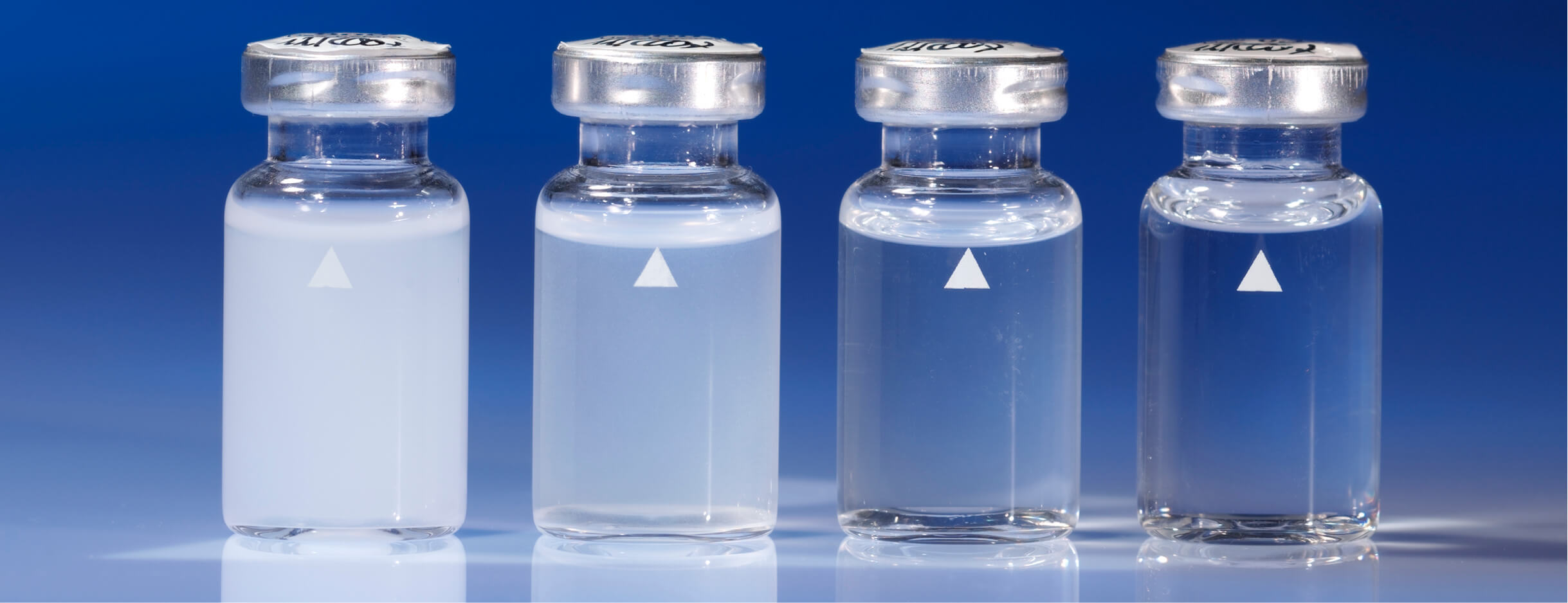A turbidity value quantifies the degree of cloudiness in water and is an important water quality metric. Turbidity is defined as the aggregate scatter and reflection of light as it interacts with particles that are contained within a liquid sample. These can originate from various sources, including microorganisms or silt.
Measure your water samples with unsurpassed accuracy - whether they have low or high turbidity values. What used to be a real problem has been solved by our experts: Multipath 90° BLAC® covers a unique turbidity range.
A turbidity value is a way of quantifying the cloudiness, or haziness of a sample. It is calculated, using an instrument called a turbidimeter, by measuring the amount of light scattered or blocked by suspended particles in a water sample. We often think of turbidity in terms of things like microorganisms, silt or other materials - but turbidity can literally anything present in the sample that causes the light beam to scatter. Turbidimeters are available as portable, benchtop or online instruments.
ISO and the US EPA are the two main organisations that govern the design critera of a turbidimeter and set specifications or even regulations for turbidity measurement. Compliance to one of these standards is regionally based.
Dans l'eau de la piscine, la turbidité est une indication de l'acidité de l'eau. Efficacité du système de filtration et des produits de nettoyage. Dans l'eau potable, il indique une éventuelle croissance bactérienne. Dans les stations d'épuration des eaux usées la turbidité est un indicateur de qualité les procédures de nettoyage.
In pool water, turbidity is an indication for the effectiveness of the filter system and cleaning agents. In drinking water it indicates the possible bacterial growth.
If a light beam hits a liquid that is clouded by small, undissolved particles, part of the light is scattered to the side of the incoming beam. The phenomenon is called the Tyndall effect.
The scattering depends on the way the light hits the particle, but also on its shape.
A detector placed at 90° detects the scattering caused by the particles. The greater the scatter, the higher the turbidity value. Depending on the application or industry in which the device is used, additional scattered light detectors can be used at other angles.
When disinfecting surface water or water that is affected by surface water during treatment in waterworks, checking the turbidity is of crucial importance for choosing the optimum disinfection effiency. With the PTV 1000 series instruments, Lovibond® has developed on-line turbidimeters that successfully handles the usual problems in this area in practice. This has now been confirmed by a long-term test in the drinking water treatment of a Dutch waterworks.
The monitoring of the indicator parameter turbidity with a limit value of 1 NTU / FNU is one of the legal obligations of the operator of a waterworks and is considered to be complied with if this value is maintained at the waterworks exit. In-house laboratories usually take on these tasks and report the results to the responsible supervisory authority according to a defined sampling plan.
On the surface, turbidity analysis is a simple measurement. But there are all sorts of factors that can have an effect on the accuracy of readings or the dependability of an instrument. At Lovibond®, we obsess about turbidity measurement so you don't have to. Our team of globally recognized turbidity experts work to anticipate and solve operators' struggles with turbidity measurement.
Turbidity is described in the Standard Methods for the Examination of Water and Wastewater Method 2130B (EPA Method 180.1) for turbidity measurement as, “an expression of the optical property that causes light to be scattered and absorbed rather than transmitted in straight lines through the sample” (Standard Methods, 1995). More simply, a turbidity value is a way of quantifying the cloudiness, or haziness of a sample and it has long been used by people as an direct indicator of overall water quality.
